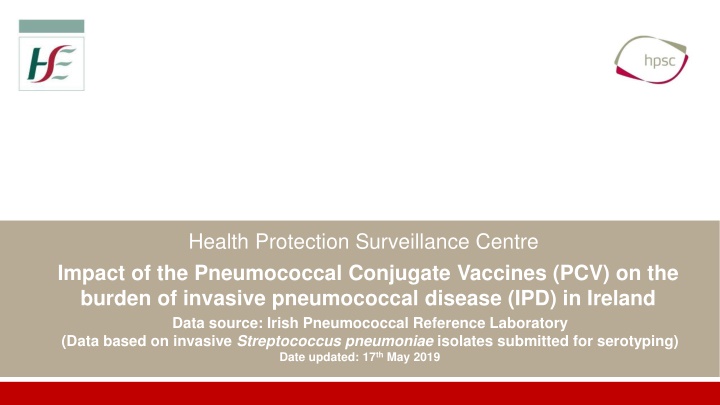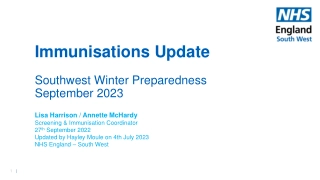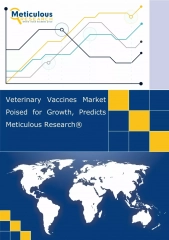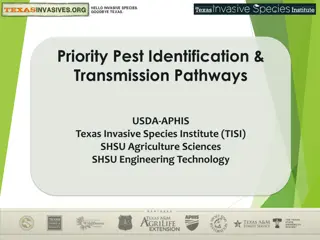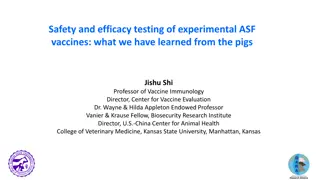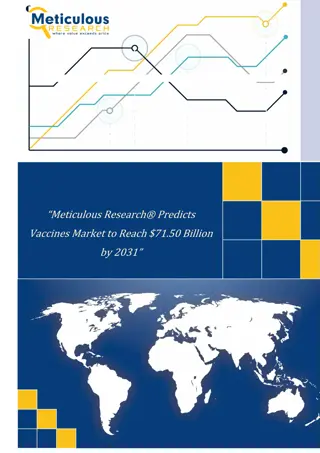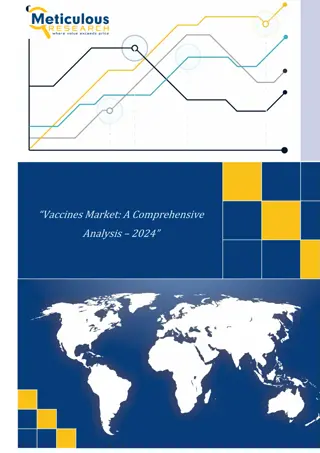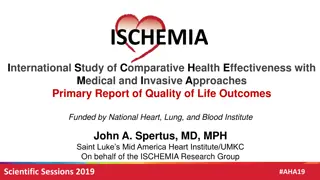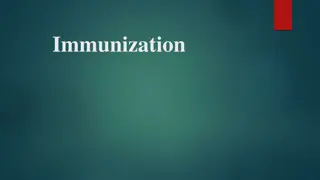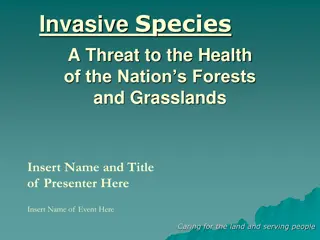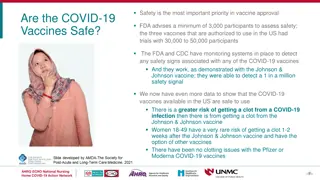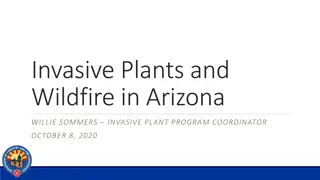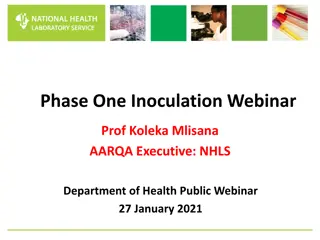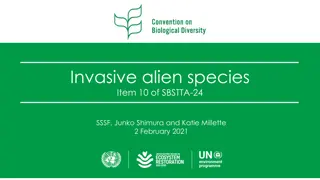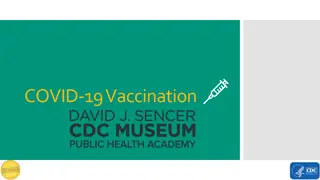Impact of Pneumococcal Conjugate Vaccines on Invasive Pneumococcal Disease in Ireland
Comparing data from Jan-Dec 2018 with the same period in 2008, the Irish Pneumococcal Reference Laboratory found an overall 10% increase in invasive pneumococcal disease in Ireland. Notably, there was a significant decline in children under 5 years of age, with a 100% reduction in cases due to PCV7 serotypes, an 88% decline due to PCV13-7 serotypes, and a 91% decrease due to all serotypes. Overall, there was a 71% decrease in IPD cases in 5-year-olds, primarily driven by a decline in PCV7 serotypes. Predominant serotypes in Jan-Dec 2018 were 8, 19A, and 12F.
Download Presentation

Please find below an Image/Link to download the presentation.
The content on the website is provided AS IS for your information and personal use only. It may not be sold, licensed, or shared on other websites without obtaining consent from the author.If you encounter any issues during the download, it is possible that the publisher has removed the file from their server.
You are allowed to download the files provided on this website for personal or commercial use, subject to the condition that they are used lawfully. All files are the property of their respective owners.
The content on the website is provided AS IS for your information and personal use only. It may not be sold, licensed, or shared on other websites without obtaining consent from the author.
E N D
Presentation Transcript
Health Protection Surveillance Centre Impact of the Pneumococcal Conjugate Vaccines (PCV) on the burden of invasive pneumococcal disease (IPD) in Ireland Data source: Irish Pneumococcal Reference Laboratory (Data based on invasive Streptococcus pneumoniae isolates submitted for serotyping) Date updated: 17th May 2019
Background IPD is a notifiable disease since January 2004 Clinicians and laboratories are legally obliged to notify all cases to the relevant Department of Public Health IPD Typing Project commenced in April 2007 and has been instrumental in: Determining the serotype distribution of IPD isolates prior to the introduction of PCV7 to the infant immunisation schedule Monitoring the impact of the vaccine on the burden of IPD and on the serotype distribution of isolates PCV7 vaccine was introduced in September 2008 To the routine infant immunisation schedule at 2, 6 and 12 months Catch-up for children <2 years of age (born 02/09/2006-30/06/2008) PCV13 was introduced in December 2010 To the routine infant immunisation schedule at 2, 6 and 12 months for children born in or after October 2010 In December 2016 due to introduction of Men B vaccine, the third dose of PCV was shifted from 12 to 13 months of age for children born after October 1st
Serotypes covered by the Pneumococcal Conjugate Vaccines (PCV) used in Ireland since 2008 1 3 4 5 6A 6B 7F 9V 14 18C 19A 19F 23F PCV7 PCV13 PCV7 and PCV13 serotypes are highlighted in red and blue, respectively Where the term PCV13-7 is presented in later slides, this relates to the six additional 6 serotypes covered by PCV13 i.e. serotypes 1, 3, 5, 6A, 7F and 19A 4
Summary of Results Comparing data from Jan-Dec 2018 with same period in 2008, the main findings based on laboratory data from the Irish Pneumococcal Reference Laboratory are: IPD in Ireland increase by 10% overall The most dramatic decline was in children <5 years of age 100% decline due to PCV7 serotypes 88% decline due to PCV13-7 serotypes 91% decline due to all serotypes Overall impact in IPD in 5 year olds: 71% decrease due to PCV7 serotypes 9% increase due to PCV13-7 serotypes 4% decrease due to non-PCV13 serotypes Predominant serotypes in Jan Dec 2018 were: 8, 19A, 12F 5
Impact of PCV on the burden of IPD caused by PCV7 vaccine serotypes in <5 year olds 100% reduction in IPD cases, comparing Jan-Dec 2018 with the same period in 2008 Data source: Irish Pneumococcal Reference Laboratory 6
Impact of PCV on the burden of IPD caused by PCV7 vaccine serotypes in 5 year olds 88% reduction in IPD cases, comparing Jan-Dec 2018 with the same period in 2008 Data source: Irish Pneumococcal Reference Laboratory 7
Impact of PCV on the burden of IPD caused by PCV7 vaccine serotypes in all age groups 91% reduction in IPD cases, comparing Jan-Dec 2018 with the same period in 2008 Data source: Irish Pneumococcal Reference Laboratory 8
Impact of PCV on the burden of IPD caused by PCV13-7 vaccine serotypes in <5 year olds 71% reduction in IPD cases, comparing Jan-Dec 2018 with the same period in 2008 Data source: Irish Pneumococcal Reference Laboratory 9
Impact of PCV on the burden of IPD caused by PCV13-7 vaccine serotypes in 5 year olds 9% increase in IPD cases, comparing Jan-Dec 2018 with the same period in 2008 Data source: Irish Pneumococcal Reference Laboratory 10
Impact of PCV on the burden of IPD caused by PCV13-7 vaccine serotypes in all age groups 4% reduction in IPD cases, comparing Jan-Dec 2018 with the same period in 2008 Data source: Irish Pneumococcal Reference Laboratory 11
Impact of PCV on the burden of IPD caused by non-PCV13 vaccine serotypes in <5 year olds Three fold increase in IPD cases, comparing Jan-Dec 2018 with the same period in 2008 Data source: Irish Pneumococcal Reference Laboratory 12
Impact of PCV on the burden of IPD caused by non-PCV13 vaccine serotypes in 5 year olds Three fold increase in IPD cases, comparing Jan-Dec 2018 with the same period in 2008 Data source: Irish Pneumococcal Reference Laboratory 13
Impact of PCV on the burden of IPD caused by non-PCV13 vaccine serotypes in all age groups Three foldincrease in IPD cases, comparing Jan-Dec 2018 with the same period in 2008 Data source: Irish Pneumococcal Reference Laboratory 14
Impact of PCV on the burden of IPD caused by all serotypes in <5 year olds 61%reduction in IPD cases, comparing Jan-Dec 2018 with the same period in 2008 Data source: Irish Pneumococcal Reference Laboratory 15
Impact of PCV on the burden of IPD caused by all serotypes in 5 year olds 24%increase in IPD cases, comparing Jan-Dec 2018 with the same period in 2008 Data source: Irish Pneumococcal Reference Laboratory 16
Impact of PCV on the burden of IPD caused by all serotypes in all age groups 10% increase in IPD cases, comparing Jan-Dec 2018 with the same period in 2008 Data source: Irish Pneumococcal Reference Laboratory 17
Cumulative number of IPD isolates between January December 2008 and 2018 and percentage changed in burden of IPD since introducing PCV in Ireland PCV 7 serotypes PCV 13-7 serotypes non-PCV13 serotypes All serotypes >5yrs >5yrs > 5yrs All ages 105 291 177 > 5yrs All ages 308 383 24 <5yrs 46 0 -100 All ages 179 16 -91 <5yrs 14 4 -71 All ages 84 81 -4 <5yrs 7 22 214 <5yrs 67 26 -61 133 16 -88 70 76 9 112 315 181 375 412 10 2008 Jan-Dec 2018 Jan -Dec % change Data Source: National Typing Project PCV7 serotypes: 4, 6B, 9V, 14, 18C, 19F and 23F; PCV13-7 serotypes: 1, 3, 5, 6A, 7F, 19A Non-PCV13 serotypes: All serotypes excluding the 13 serotypes (listed above) in PCV13 18
Distribution of the S. pneumoniae serotypes in Ireland by age group in Jan - Dec 2018 * Denotes serotypes included in PCV7 *^ Denotes additional serotypes included in PCV13 Data source: Irish Pneumococcal Reference Laboratory 19
Activities key to the surveillance of IPD in Ireland Notifications: Clinicians and laboratories should notify all cases of IPD to the relevant Department of Public Health and data are inputted to the national Computerised Infectious Diseases reporting (CIDR) system for notifiable infectious diseases. Typing: Laboratories should submit all invasive S. pneumoniae isolates to CUH for typing by address: Irish Pneumococcal Reference Laboratory which is housed with Irish Meningitis & Sepsis Reference Laboratory, Temple Street Children s University Hospital, Temple Street, Dublin 1 Enhanced surveillance: Departments of Public Health perform enhanced surveillance on cases of IPD notifications and enter these data on CIDR. Antimicrobial resistance: Laboratories should report data on antimicrobial resistance profiles of invasive S. pneumoniae isolates (from blood and CSF) to the European Antimicrobial Resistance Surveillance System Network (EARS-Net) at HPSC. 20
Laboratories: Submission of isolates for typing For details regarding the submission of invasive Streptococcus pneumoniae isolates for typing, please contact: Dr Mary Corcoran Tel.: 01 878 4854 Email: mary.corcoran@cuh.ie Address: Irish Pneumococcal Reference Laboratory, Irish Meningitis & Sepsis Reference Laboratory, Temple Street Children s University Hospital, Temple Street, Dublin 1 21
Departments of Public Health: IPD surveillance IPD enhanced surveillance form is available at: http://www.hpsc.ie/A- Z/VaccinePreventable/PneumococcalDisease/SurveillanceForms/ Protocol for the enhanced surveillance of IPD is available at: http://www.hpsc.ie/A- Z/VaccinePreventable/PneumococcalDisease/InformationforHealthProfessio nals/ 22
Further Reading For further details on the surveillance and epidemiology of IPD in Ireland, please see: Biannual Reports on invasive Streptococcus pneumoniae infection available at http://www.hpsc.ie/A- Z/VaccinePreventable/PneumococcalDisease/Publications/QuarterlyReportsonInvasivePneumococc alDisease/ Annual Reports on invasive Streptococcus pneumoniae infection available at https://www.hpsc.ie/a- z/vaccinepreventable/pneumococcaldisease/publications/annualreportsoninvasivepneumococcaldis ease/ Articles published in Epi-Insight; available at http://www.hpsc.ie/a- z/vaccinepreventable/pneumococcaldisease/publications/articles/ Posters and Presentations, available at http://www.hpsc.ie/A-Z/VaccinePreventable/PneumococcalDisease/PostersPresentations/ Quarterly and Annual EARSS Reports available at http://www.hpsc.ie/a- z/microbiologyantimicrobialresistance/europeanantimicrobialresistancesurveillancesystemearss/ears -netdataandreports/ 23
IPD National Typing Project Team Mary Corcoran1, Prof Hilary Humphreys2, Suzanne Cotter3, Robert Cunney1, 3, Stephen Murchan3, Margaret Fitzgerald3, Meadhbh Hunt3, Breda O Loughlin3 Jolita Mereckiene3 11Irish Pneumococcal Reference Laboratory, Irish Meningitis & Sepsis Reference Laboratory, Temple Street Children s University Hospital, Temple Street, Dublin 1 2Education and Research Centre, Royal College of Surgeons in Ireland and Beaumont Hospital 3Health Protection Surveillance Centre (HPSC), Dublin. 24
Acknowledgements The Pneumococcal Typing Project Team wish to thankMary Corcoran, Martha McElligott and Imelda Vickers who carried out the serotyping, all the laboratories who have participated in the project to date, your support is very much appreciated. Thanks to all the health care professionals involved in the surveillance of invasive pneumococcal disease in Ireland. 25
